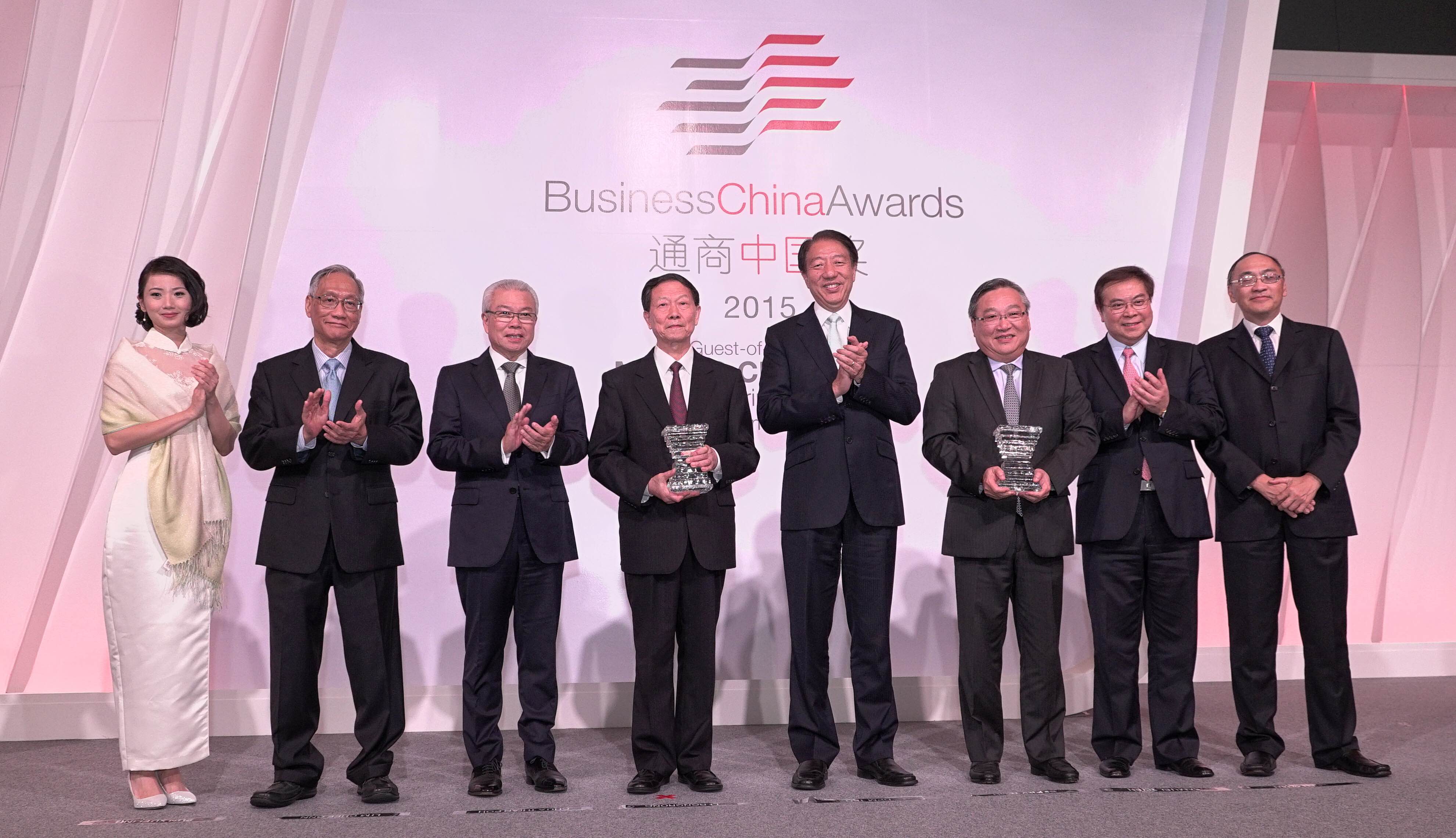Speech by DPM Teo Chee Hean at Business China Awards on 25 November 2015. DPM Teo spoke in Chinese and English.
通商中国主席蔡天宝先生
各位嘉宾,
大家晚上好!
今晚,我很高兴再次来颁发通商中国奖,表扬对新中关系做出重大贡献的个人和团体。
对新中关系来说,今年是很特别的一年。两国庆祝建交25周年。七月陈庆炎总统访问中国,这个月初,中国国家主席习近平也刚访问新加坡。
习主席访新时,新中两国建立与时俱进的全方位合作伙伴关系。全面加深两国在贸易、投资、金融和社会治理, 等方面的合作。两国关系将推向更高水平。
接下来,让我用英语发言。
Substantive Bilateral Economic Relations
Singapore-China relations have always been forward-looking, innovative and pace-setting. As we bring our bilateral relationship to the next level, these characteristics will continue to define our partnership.
Our bilateral relations are undergirded by strong economic cooperation. China is Singapore’s largest trading partner. Over the past 25 years, bilateral trade volume has grown more than 20 times. China is also an important investment destination for our companies. Singapore has been China’s largest foreign investor country since 2013. Our companies are investing in more sectors and regions across China. At the same time, more than 6,000 Chinese companies have used Singapore as a base to venture into the region.
The launch of the negotiations to upgrade the China-Singapore Free Trade Agreement (CSFTA), announced during President Xi’s State Visit is thus timely. When completed by next year, the upgrade will pave the way to further enhance trade facilitation, services cooperation and improve investment protection for businesses from both countries.
Our two Government-to-Government (G-to-G) projects, the Suzhou Industrial Park and Tianjin Eco-City, have also made good progress. They serve as models to pilot new measures that are aligned with China’s development needs. Similarly, the third G-to-G project in Chongqing, which was also launched during President Xi’s State Visit, will be of a high starting point, of high standard, and innovative. As a priority demonstration project for China’s national strategies like the “One Belt One Road”, Western Region Development and Yangtze River Economic Belt, we hope that the project will play an important role in catalysing the development of China’s Western Region, as China embarks on the next stage of its reforms.
Collaboration through Closer Regional Economic Integration
Beyond bilateral cooperation, Singapore and China also share a common interest in advancing regional integration through economic architecture such as the Regional Comprehensive Economic Partnership (RCEP) and the recent upgrade of the ASEAN-China Free Trade Area (ACFTA). These regional economic integration efforts are important to improve collective economic development and strengthen regional stability and peace.
With its large and growing economy, China has an important stake in the evolving regional architecture. First, China has an important role to play and has declared its commitment to maintaining a stable and peaceful regional order, including cross-strait relations. Singapore is honoured to have hosted the historic meeting between leaders from the two sides of the Taiwan Strait. A stable regional order that is not overshadowed by nationalism and territorial disputes will boost investor confidence in the region and provide a conducive environment for businesses to thrive.
Second, China has engaged the region with its “One Belt, One Road” vision. As a key hub in ASEAN, Singapore can play a constructive role in enhancing trade, finance and logistics connectivity between China and ASEAN. A key focus of the third G-to-G project is to catalyse the growth of Western China by enhancing connectivity in the areas of finance, aviation, logistics and ICT. The CSFTA upgrade will also bring about greater trade connectivity between both sides. Singapore is also happy to be one of the earliest prospective founding members of the Asian Infrastructure Investment Bank, a key initiative under the “One Belt, One Road” vision.
Role of Business China
Another critical element of connectivity that will further enhance Singapore-China relations is people-to-people linkages. There are exchanges between the schools and institutions of higher learning in both countries. Close to 50,000 Chinese officials and cadres have visited Singapore for study trips and courses since the 1990s. We also have growing numbers of Singapore public officers going to China to experience and learn more about China’s impressive development.
From the economic perspective, Singapore businesses are familiar with China and can serve as a bridge between China and the region. Business China can also help Singaporeans and Singapore businesses gain useful insights and networks in China.
Tonight, we celebrate the recipients of this year’s Business China Awards. Congratulations! I hope their successes will inspire more Singaporeans to continue to enhance our people-to-people linkages with China, and help strengthen Singapore’s overall relations with China.
Thank you.
* * * * *
Explore recent content
Explore related topics

